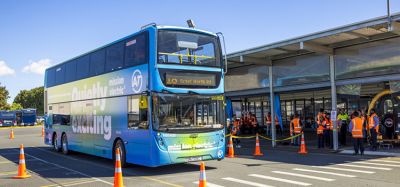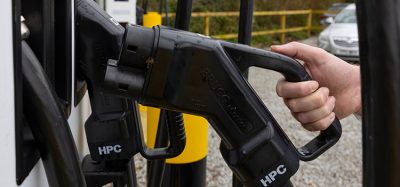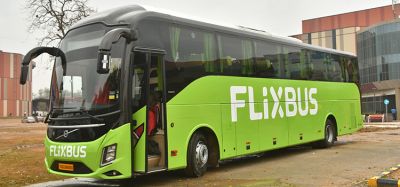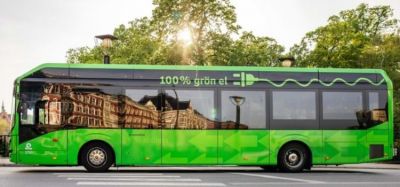UNECE issues guidance on reducing car use in cities after pandemic
- Like
- Digg
- Del
- Tumblr
- VKontakte
- Buffer
- Love This
- Odnoklassniki
- Meneame
- Blogger
- Amazon
- Yahoo Mail
- Gmail
- AOL
- Newsvine
- HackerNews
- Evernote
- MySpace
- Mail.ru
- Viadeo
- Line
- Comments
- Yummly
- SMS
- Viber
- Telegram
- Subscribe
- Skype
- Facebook Messenger
- Kakao
- LiveJournal
- Yammer
- Edgar
- Fintel
- Mix
- Instapaper
- Copy Link
Posted: 17 April 2020 | Sam Mehmet (Intelligent Transport)
Drawing on experiences from across the Pan-European region, the guide provides policy considerations that set out the positive and significant impacts of mobility management programmes.


It is clear that the COVID-19 pandemic will have a long-lasting impact on transport and mobility. Passenger trust, priority and way of living have shifted in most cases, and the future of the public transport sector is currently uncertain. According to the United Nations Economic Commission for Europe (UNECE), a critical re-assessment is required to establish how the sector can shift to more sustainable and efficient mobility after the virus subsides.
Providing a tool to help policymakers navigate this key area, UNECE has issued guidance on mobility management – defined by the European Platform on Mobility Management as the promotion of sustainable transport and the management of the demand for car use by influencing travellers’ attitudes and behaviours.
Policy considerations include:
Home to work mobility
Mobility management should become standard practice for companies as well as for entire business and industrial parks, managed in cooperation with local authorities. An example is the “Green Way” project in Villach, Austria, where a technology company’s efforts to promote car-pooling, facilitate public transport use, encourage cycling and electric vehicle use led to 50 per cent of its 3,400 employees travelling to work more sustainably.
Home to school mobility
Schools should commit to engaging in mobility management and should be invited to appoint a mobility team, with the aim of increasing the autonomy of students’ mobility and reducing congestion around schools and university campuses. School Travel Plans set up in the West Midlands in the United Kingdom have more than halved car use for home to school journeys.
Major events
Appropriate mobility management should be an integral part of the organisation of major events, guaranteeing accessibility with a variety of transport modes other than the car and raising participants’ awareness of their transport options. For example, travel planning for major concerts held in Brussels in 2017 lead to the vast majority of fans reaching the venue with sustainable modes of transport.
Sustainable urban logistics
Incentivising sustainable urban logistics solutions through innovative technologies and methods for greener last-mile deliveries should be encouraged. For example, the creation of a distribution service in Padova, Italy, has led to the reduction of 1,216km per day of inner-city deliveries. In Utrecht, the Netherlands, freight distribution by electric boat for last mile deliveries has helped reduced traffic congestion and cut annual emissions of CO2 by 17 tonnes.
Parking management
The ability to effectively manage parking solutions has a direct impact on reducing congestion and pollution. With appropriate alternative solutions in place, only 33 per cent of trips to a new retail park in Zurich, Switzerland, are made by car.
Sustainable Urban Mobility Plans (SUMPs)
Robust planning is fundamental. For this to be successful:
- National governments should assist local administrations through guidelines and technical support
- SUMPs should address different policy areas and sectors and foresee the active participation of citizens and other stakeholders
- SUMPs should be updated to reflect emerging transport innovations.
Successful examples of SUMPs set out in the case studies include those in Kruševac, Serbia, Strasbourg, France, and Seattle, U.S.
Demand responsive transport
This offers an alternative to conventional public transport for sparsely populated areas, reducing car dependency. In the remote village of Kolsillre, Sweden, which has a population of only 100, an on-demand minibus and online journey booking service resulted in 4,100 passengers transported in one year. This proved highly cost-effective, with its cost per person of €7.26 translating into €0.61 per kilometre – considerably less than the €2 per kilometre of regular bus lines in the area.
Communication and information
Communications and raising awareness of sustainable mobility possibilities can be highly effective, especially if this is tailored to different target groups. Munich, Germany, takes advantage of life-changing events such as the birth of a baby, retirement, or moving to the city, in order to influence people’s mobility behaviour. An impact assessment showed that new citizens that received dedicated welcome folders and phone consultations used public transport 7.6 per cent more than those who did not, equivalent to almost 6,500 fewer car journeys in the city each year.
Building on the good practices identified, the guide sets out a range of lessons learned to support the implementation of effective mobility management policies:
- Ensure there are appealing alternatives to the car
- Know the target group –there is no one size fits all for cities or countries, but this is also true for different sections of the population
- The more stakeholders are involved in the planning and implementation of the scheme the more consensus can be achieved on the best way forward
- Ensure there is a long-term approach with commitments from all stakeholders in the area and integration with other programmes
- No scheme will work if resources are not dedicated to ensuring public understanding, acceptance and awareness of benefits
- Providing a monetary incentive or a reward related to the adoption of these types of schemes will also further facilitate the uptake of measures.
Related topics
Air Quality, COVID-19, Fleet Management & Maintenance, Sustainable Urban Transport, Travel & Passenger Information, Vehicle & Passenger Safety
Related cities
Europe
Related organisations
The United Nations Economic Commission for Europe (UNECE)








